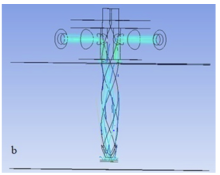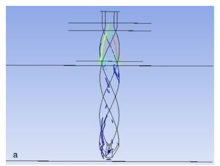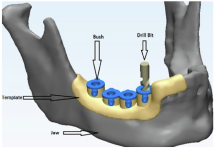Finite element analysis of dental implant surgical guides
| Abstract | Dental drill guide is one of the most widely used devices to perform the dental implant surgery. The use of drill guides can increase the bone temperature while performing surgery because of the restriction introduced by the small clearance between the drill bit and the internal diameter of the guiding cylinders/ bush/sleeve. This restriction can severely limit the required amount of irrigant flow to the drilling site, lea1829ding to increase in bone temperature. The rise in temperature can result in thermal necrosis and may induce many complications like bone cell death, longer healing times and weak bond between the implant and the jaw bone. In order to overcome this drawback new design has been proposed by providing irrigation channels in the internal diameter of bush. In this paper FEM analysis of proposed design is performed and it’s compared with the conventional dental drill guide. Fluent and transient thermal modules of finite element methods (ANSYS) are used to perform this analysis. Results of this study show that, with the use of new design of drill guides irrigant flow is better, which further results in better heat dissipation and lower bone temperature.. |
| Faculty |
Prof. Parveen Kalra
|
|
parveenkalra@pec.edu.in
|
|
| Collaborations | Chandigarh Engineering College |
| More Information | https://doi.org/10.1016/j.matpr.2022.01.046 |









